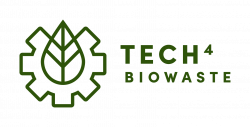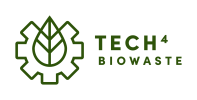Torrefaction
| Technology | |

| |
| Technology details | |
| Name: | Torrefaction |
| Category: | Conversion (Thermochemical processes and technologies) |
| Feedstock: | Garden and park waste (lignocellulosic biomass) |
| Product: | Bio-coal |
Torrefaction is a thermochemical treatment applied to upgrade lignocellulosic biomass into a solid bioenergy carrier (torrefied biomass) with superior properties in terms of logistics (handling, transport, and storage) and end use (combustion, gasification, and chemical processing). The word "torrefaction" is derived from the French verb torrefier, which means roasting (as in the roasting of coffee beans). As in most thermochemical treatments, torrefaction results in a combination of products, namely, solid torrefied biomass, condensable liquids, and permanent gases.
Feedstock
Origin and composition
In general, woody biomass and other lignocellulosic biomass are used for torrefaction. Heat transfer to the biomass lies at the heart of the torrefaction process as the temperature of the biomass must be increased sufficiently to allow the thermochemical degradation reactions to take place. In case biomass is not predried, moisture evaporation creates an additional heat demand. Since the heat requirement for drying is much larger than for torrefaction, and the heat used in drying the biomass cannot be readily recovered, applying dry torrefaction for upgrading biomass feedstock with high inherent moisture levels is typically less attractive. For this reason, moisture content of incoming biomass should normally not exceed 15%.
Pre-treatment
Process and technologies
Torrefaction process
In torrefaction, the feedstock is subjected to thermal treatment at a relatively low temperature of 200°C-300°C in the absence or reduced oxygen level. Torrefaction could be wet or dry. During wet torrefaction, a hot compressed water is used in heating the biomass. During dry torrefaction, direct heating or hot inert gas (e.g. argon, helium and neon) is normally applied. The latter has been the most common practice for commercial purposes.[1]
During torrefaction, as the temperature of the biomass is increased, the evaporation of physically bound water starts as the temperature approaches 100°C. At more elevated temperatures above 160°C, the structural biopolymer constituents (i.e., cellulose, hemicellulose, and lignin) within the biomass begin to degrade, forming gases and vapours. Hemicellulose typically decomposes at temperatures above 220°C, whereas cellulose starts to decompose at a higher temperature, typically above 300°C.
Torrefaction technologies
- Rotary drum reactor
- Screw reactor
- Multiple Hearth Furnaces (MHF)
- Torbed reactor
- Moving bed reactor
- Belt reacor
- Microwaves reactor
Product
Torrefaction has been employed to improve on biomass properties, such as lower moisture content, higher energy density, improved hydrophobicity, and better grindability.
| Raw biomass | Torrefied biomass |
|---|---|
| Higher moisture | Lower moisture |
| Higher O/C and H/C ratios | Lower O/C and H/C ratios |
| Lower heating value | higher heating value |
| Hygroscopic | Hydrophobic |
| Poor grindability | Better grindability |
| Non uniform properties | More uniform properties |
| Energy density: 1 MJ/kg | Energy density: 1.28 MJ/kg |
Torrefaction process essentially aimed at making biomass suitable for subsequent processes such as pyrolysis, hydrolysis and densification. Densification is one of the most prominent paths for processing torrefied biomass. Densification involves applying mechanical force on biomass to compact it into solid particles of uniform size such as pellets, briquettes and logs. Another area of application of torrefied biomass is in iron making. Biomass has the potential to cause reduction in fossil fuel usage in blast furnaces either as metallurgical coke production, iron ore agglomeration or pulverised coal in tuyere injection.
Post-treatment
Technology providers
| Company name | Country | Technology subcategory | Technology name | TRL | Capacity [kg/h] | Heating | Reactor | Temperature [°C] | Feedstock: Food waste | Feedstock: Garden & park waste |
|---|---|---|---|---|---|---|---|---|---|---|
| Blackwood Technology | The Netherlands | - | FlashTor torrefaction technology | 8-9 | 8000 | - | Toroidal fluidised bed reactor | - | ||
| CENER | Spain | - | BIO2C - Torrefaction Pilot Plant | 6-7 | 150-350 | - | Internally rotating shaft indirectly heated reactor using thermal oil (250-300ºC) | 240-310 | ● | |
| Perpetual Next | The Netherlands | - | Torr-coal | 7-8 | 4500 | - | Rotary drum | 280-310 | ● | ● |
Blackwood Technology
| General information | |||
| Company: | Blackwood Technology | 
| |
| Country: | The Netherlands (Duiven) | ||
| Contact: | |||
| Webpage: | https://www.blackwood-technology.com | ||
| Technology and process details | |||
| Technology name: | FlashTor torrefaction technology | Technology category: | Conversion (Thermochemical processes and technologies) |
| TRL: | 8-9 | Capacity: | 8000 kg·h-1 |
| Atmosphere: | Reactor: | Toroidal fluidised bed reactor | |
| Temperature: | °C | Other: | |
| Feedstock and product details | |||
| Feedstock: | Product: | Bio-charcoal (Blackwood pellets) | |
CENER
| General information | |||
| Company: | CENER BIO2C | ||
| Country: | Spain | ||
| Contact: | Goizeder Barberena
info@cener.com | ||
| Webpage: | Pretreatment Unit - Cener BIO2C | ||
| Technology and process details | |||
| Technology name: | BIO2C - Torrefaction Pilot Plant | Technology category: | Conversion (Thermochemical processes and technologies) |
| TRL: | 6-7 | Capacity: | 150 - 350 kg·h-1 |
| Atmosphere: | not relevant | Reactor: | Internally rotating shaft indirectly heated reactor using thermal oil (250-300ºC) |
| Temperature: | 240-310 °C | Other: | The plant is very flexible regarding raw material particle size distribution (0,25-40 mm) and bulk density (50-500 kg/m3) |
| Feedstock and product details | |||
| Feedstock: | Herbaceous (cereal straw, agro-residues…), woody (pine, poplar, beech, eucalyptus, pawlonia, olive tree pruning…), variety of organic wastes (including low density materials and materials with high content of fines and dust). | Product: | Bio-charcoal (Black pellets) |
CENER Biomass Department performs applied research activities in the field of biomass, providing R&D services and technical assistance to all agents of the sector. The area is focused on the development & optimization of production processes of bioproducts, solid biofuels, advanced liquid or gaseous biofuels, as well as biorefinery concepts. Indeed, the main pillars are focused on solid biofuels, bioprocesses and comprehensive sustainability assessment. The main infrastructures in this department include the Biomass Laboratory (biomass & biofuels characterization and process development at lab scale), as well as the Biorefinery and Bioenergy Centre (BIO2C).
Perpetual Next
| General information | |||
| Company: | Torrcoal B.V. | 
| |
| Country: | The Netherlands (Sittard-Geleen) | ||
| Contact: | |||
| Webpage: | https://www.torrcoal.com | ||
| Technology and process details | |||
| Technology name: | Torr-coal | Technology category: | Conversion (Thermochemical processes and technologies) |
| TRL: | 7-8 | Capacity: | 4500 kg/h. 30.000 ton/y output kg·h-1 |
| Atmosphere: | Reactor: | Rotary drum | |
| Temperature: | 280-310 °C | Other: | |
| Feedstock and product details | |||
| Feedstock: | Wood, agro-residuals and non-recyclable waste | Product: | Bio-charcoal |
Open access pilot and demo facility providers
Patents
Currently no patents have been identified.
References
- ↑ Adekunle A. Adeleke, Jamiu K. Odusote, Peter P. Ikubanni, Olumuyiwa A. Lasode, Madhurai Malathi, Dayanand Paswan, 2020: Essential basics on biomass torrefaction, densification and utilization. International Journal of Energy Research, Vol. 45, 1375-1395. doi: https://doi.org/10.1002/er.5884